봄
Swans - Messengers of Spring
Honk! Honk! A piercing chorus falls from the sky…
A cold Spring morning in Biei… brr! The snow hasn’t quite melted, but there are still mornings and nights falling below 0oC. It’s the kind of weather that makes you want to curl up under the duvet for five more minutes…
Honk! Honk, honk!
All of a sudden, nature’s alarm clock interrupts your thoughts! What could be making such a noise?
Look out of the window and up at the sky and you will see a most majestic sight…
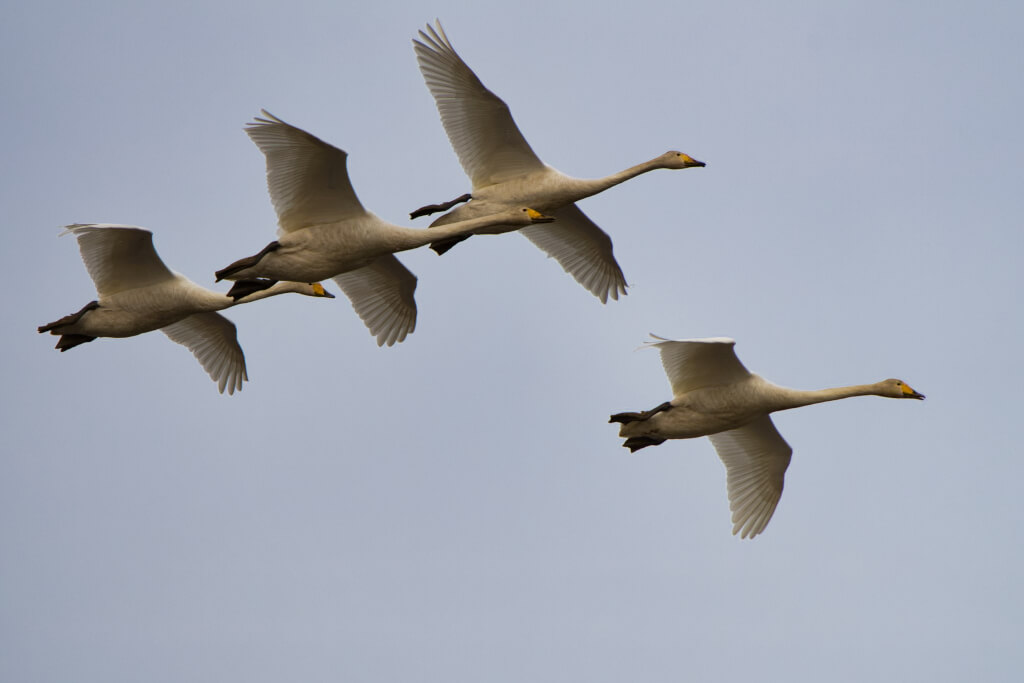
Swans! At last, spring has returned to Biei.
Swans – Migratory Visitors to Biei
Swans passing through Japan breed in Siberia, migrating down to Japan’s coastal regions as they flee eastern Russia’s harsh winter. In mid-February, they begin to head back up to Siberia in anticpation of the new breeding season and the warm summer. On their way, they stop off in Hokkaido during March-April. Here in Biei, when we hear their loud honking then we know that spring has finally arrived!
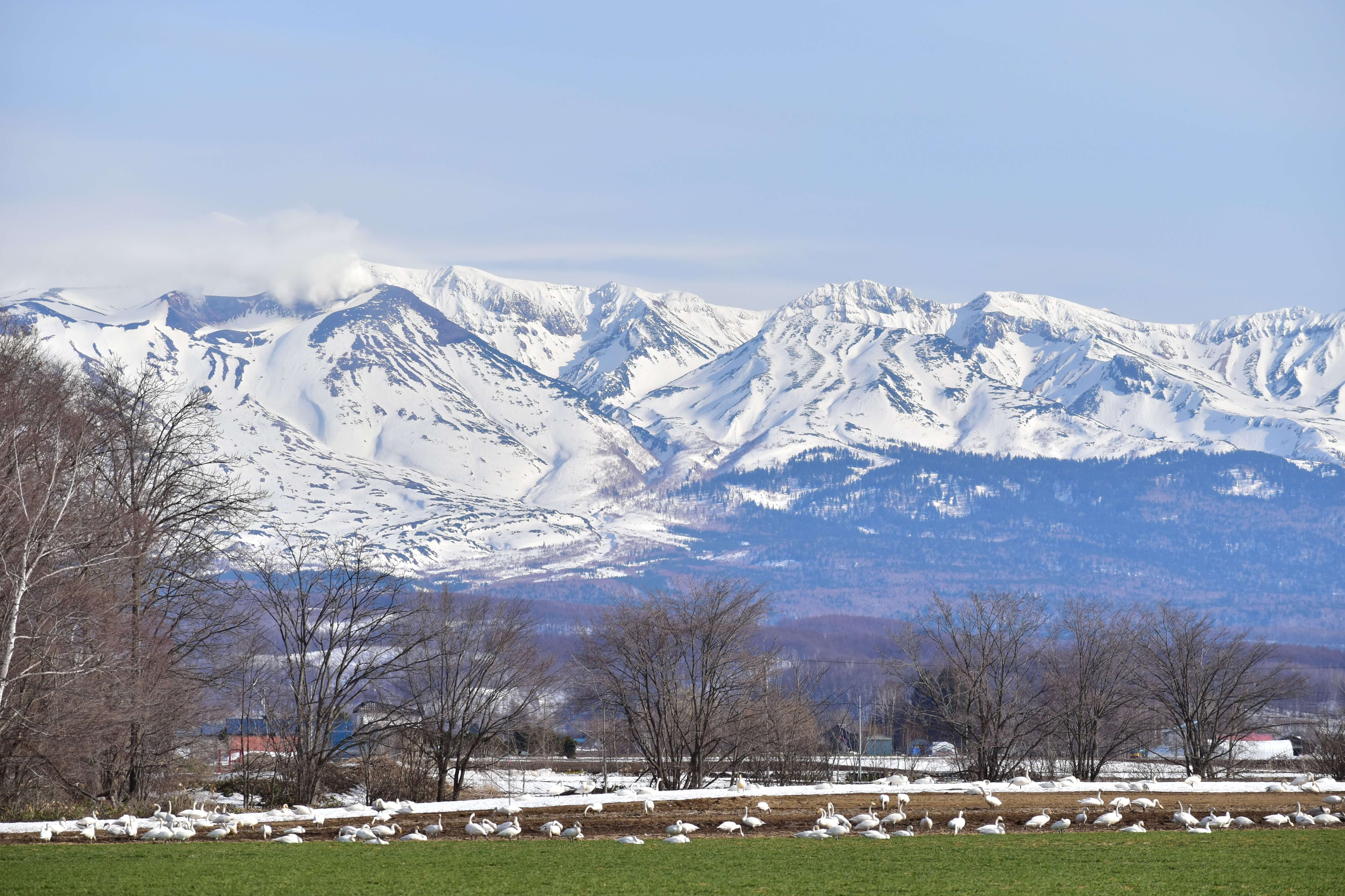 Hundreds of swans gather, with Mt. Tokachi in the background.
Hundreds of swans gather, with Mt. Tokachi in the background.
The swans are beloved by Biei residents. Not only are they a sign that spring is here, but they are one of the few animals in the region that won’t immediately run away from humans. It’s a unique chance to see the animal kingdom up close before summer comes and animals become harder to spot in the leafy landscape!
What do the swans get up to as they pass through Biei? Let’s follow them around and take a look…
A Feast Fit for a Swan!
It’s 7am. The swans come gliding over Biei town’s urban area after spending the night in a sheltered place. With lots of honking and flapping, they glide down into the rice paddies found in Biei’s flatter areas towards Shirogane Onsen.
The snow has already melted in the rice paddies, and the swans seem to like having some water to paddle around in!
While there, they truffle through the meltwater and mud. What on earth could they be looking for? Here’s a hint… it’s something that humans find delicious, too!
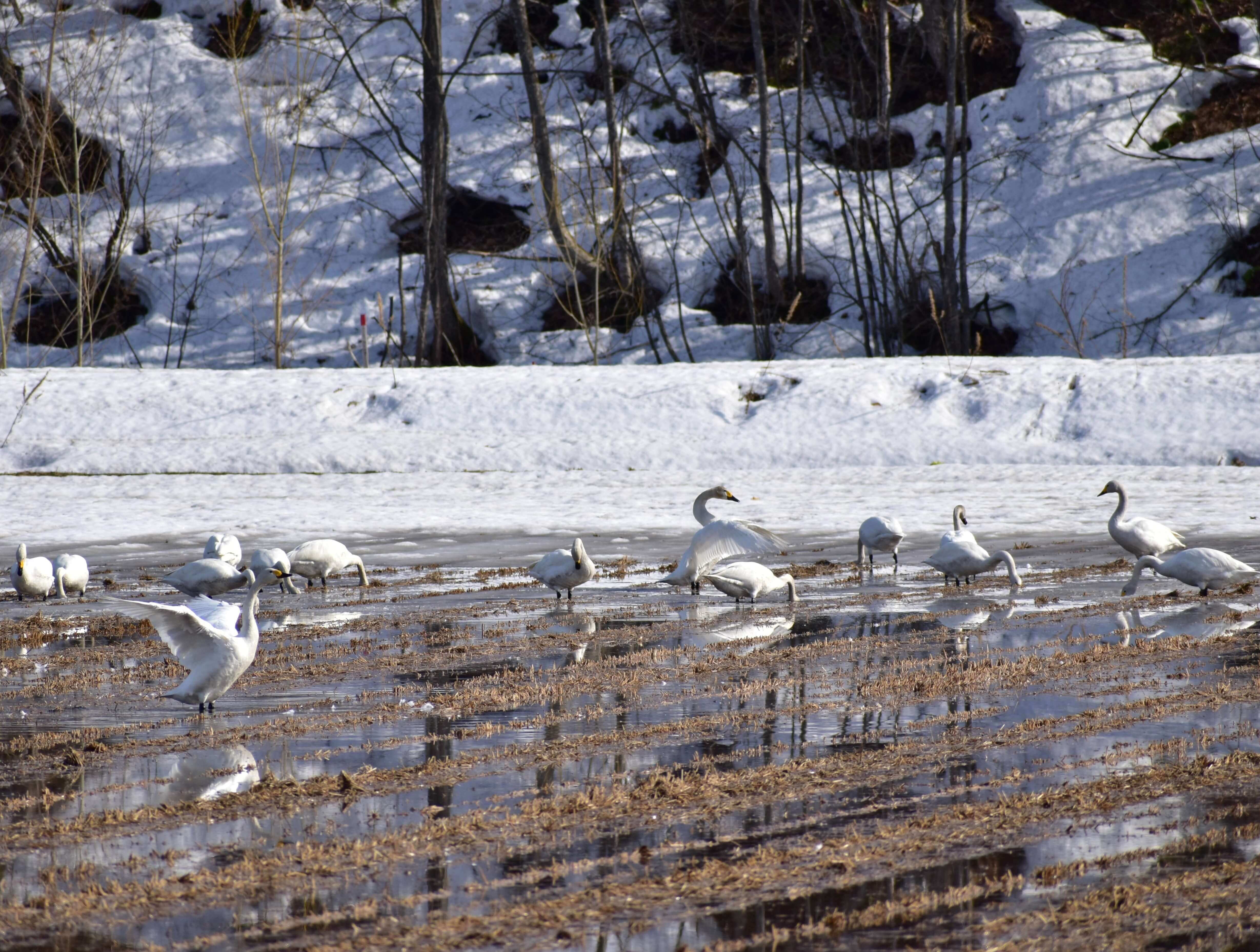 The swans are reflected beautifully in the rice paddy.
The swans are reflected beautifully in the rice paddy.
A swan’s preferred diet is aquatic vegetation, such as pondweed and underwater grasses. However, temperatures close to 0oC are not unusual in Biei’s spring. With such cold temperatures we’re sure it can’t be very comfortable for the swans to bob under the water for too long, so in winter, leftover agricultural produce becomes their favourite food. This is why, during Biei’s cold spring, hundreds of them gather all at once in agricultural fields. In rice paddies, they search for dropped grains of rice for a quick and easy meal. They must love rice just as much as humans!
It’s not just rice that swans enjoy. They can also be seen in old corn fields, recognizable by the large, cut stems that poke out of the soil. In Biei, the produce of many these corn fields is not necessarily for human consumption but rather for the livestock that live in town. Turns out that swans love corn, too!
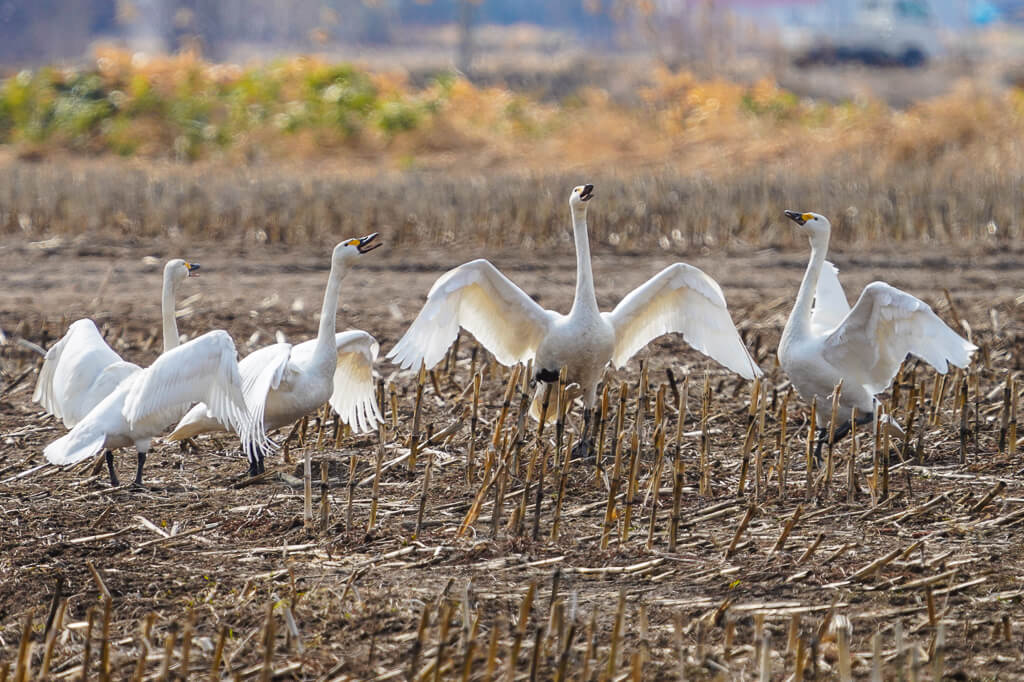
“Yes, we do! We love corn, hooray!”
Home, Sweet Swan Home
After filling their bellies with rice and corn, the swans head home just before sunset. They often take off in big groups, honking to each other excitedly as they fly.
In Biei, many of them make their home at Mizusawa Dam close to popular tourist destination Farms Chiyoda. The dam has some amazing views of the Tokachi Mountain Range on a clear day!
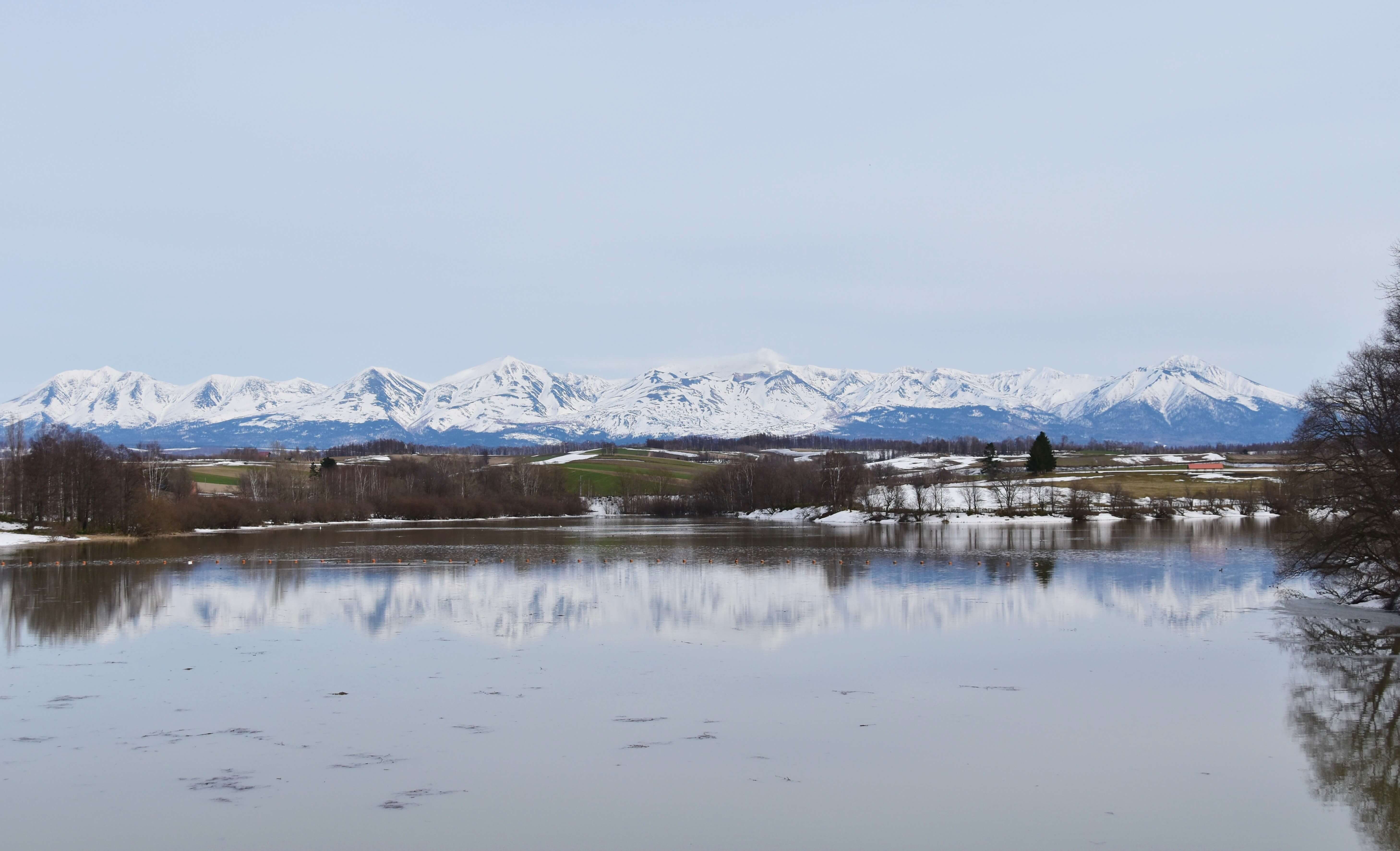 The Tokachi Mountain Range, perfectly reflected in the waters of Mizusawa Dam.
The Tokachi Mountain Range, perfectly reflected in the waters of Mizusawa Dam.
At 4pm, many swans begin gliding in over the dam. You will hear their calls before you see them, which is good news for wildlife photographers. As you can anticipate where they will appear by the sound of their calls, they are very easy to capture in flight so even amateur photographers can get some great shots!
As they descend, they often pass in front of the mountains in spectacular formations.
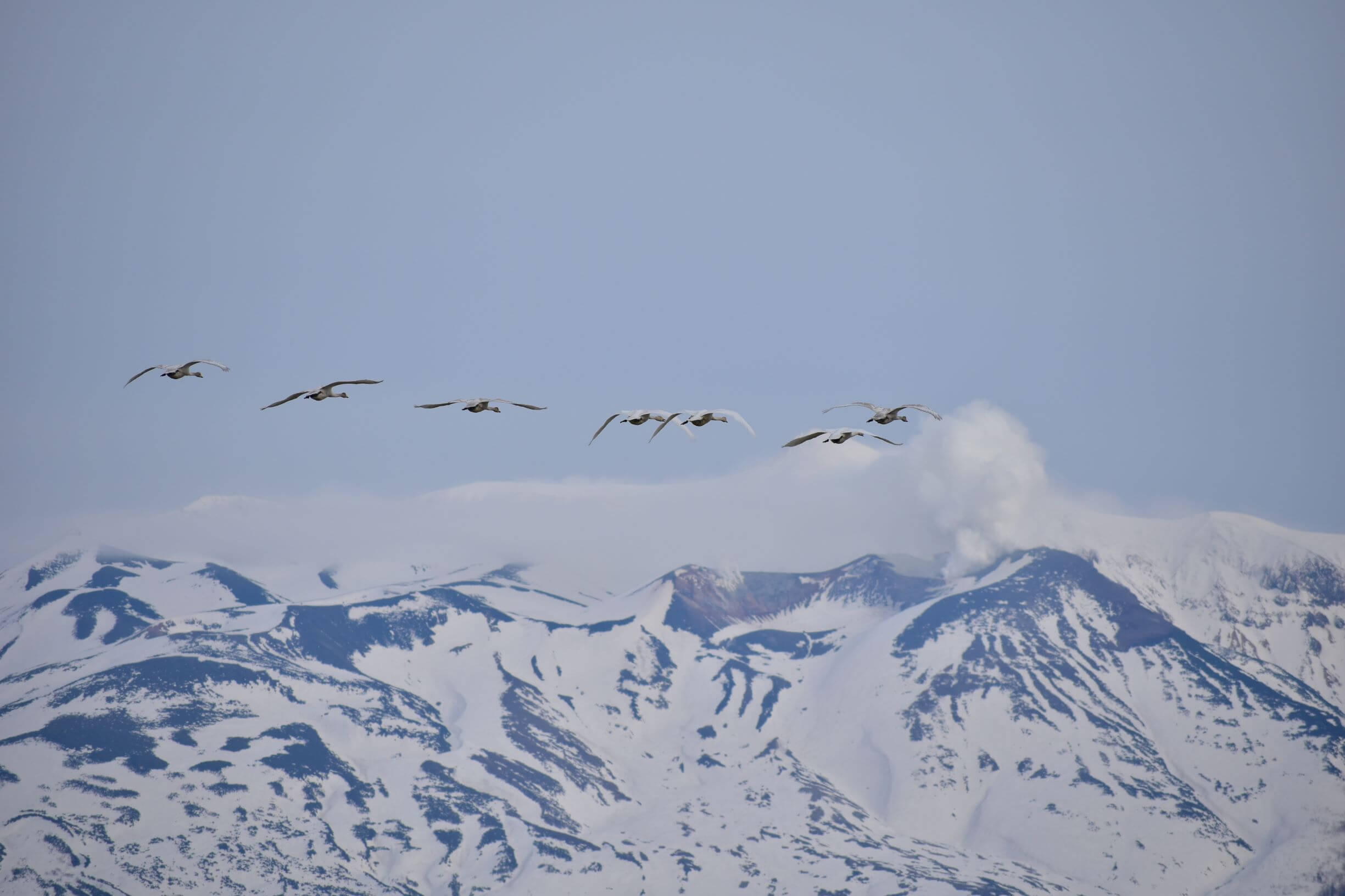 A line of swans descends right in front of smoking Mt. Tokachi.
A line of swans descends right in front of smoking Mt. Tokachi.
In large groups, the swans come gracefully down from the heavens, following a leader. As they approach, they splay their webbed feet to increase air resistance and slow themselves down, allowing them to control where they land. As their webbed feet push against the water’s surface, fountain-like sprays gush up around them. It is quite a remarkable sight!
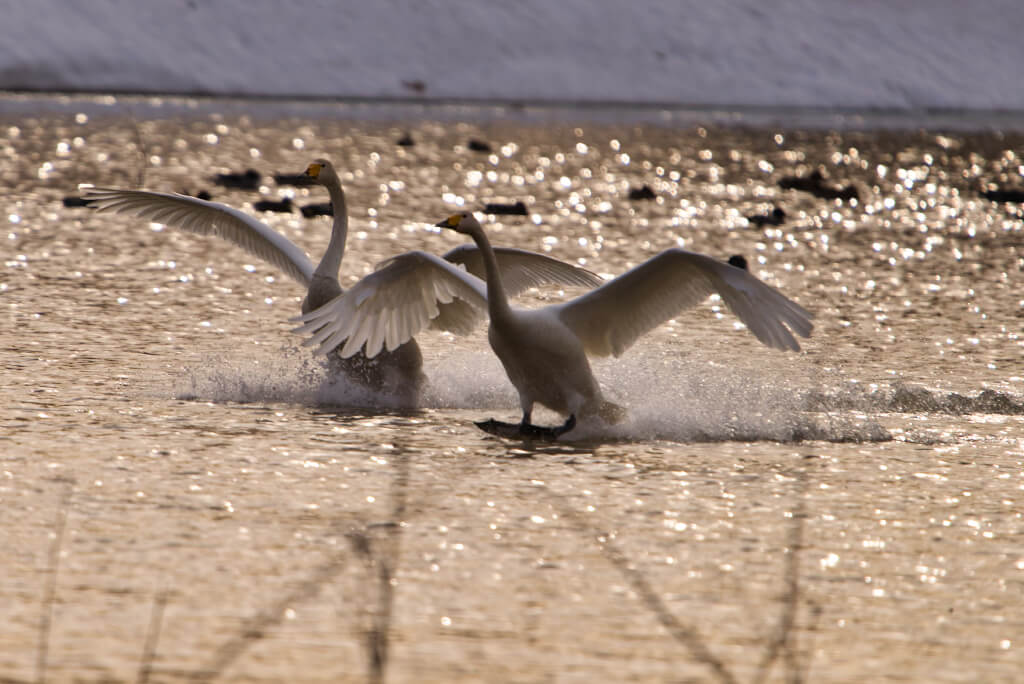
Ker-splooooosh!
Swans mate for life, so when they gather on the water, pairs or extended families gently glide around the water’s surface together. Migration for swans must feel a bit like a family vacation!
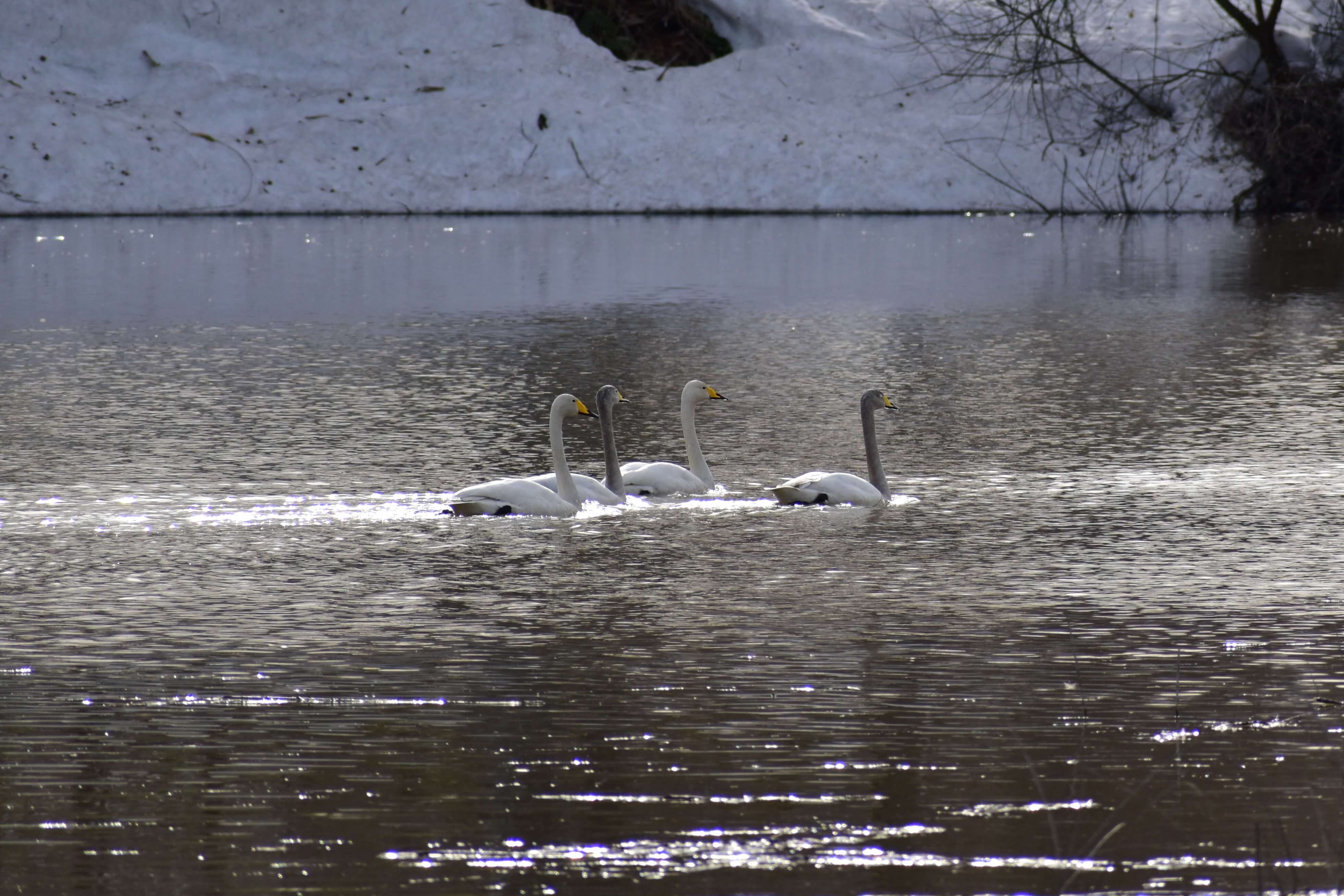 Two adult swans (white) with two young swans (dark grey), possibly parents with their children.
Two adult swans (white) with two young swans (dark grey), possibly parents with their children.


